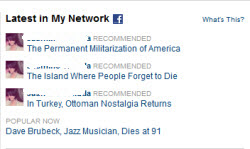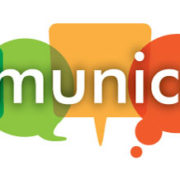Seven Digital Truths for Content Marketers
For this week’s blog post, long time colleague, friend and content marketing expert, Rachel Medanic, is back again to help our readers overcome the challenges of delivering on a robust and engaging content marketing plan for 2013. Rachel has been a marketing pro for over 15 years and is currently is a Client Services Manager for PublishThis.
So you’ve started down the path of content marketing and tackled some of the low hanging fruit but are now experiencing an idea shortfall. Where do you turn to re-ignite your efforts? First, get perspective. Content Marketing Institute, MarketingProfs and Brightcove recently teamed up to produce some data driven insights now published in the 2013 B2B Content Marketing Benchmarks, Budgets and Trends – North America report. You are not alone: volume, variety and quality of content are key areas where B2B marketers struggle. 64% say they can’t produce enough content, 52% struggle to create engaging content and 45% say maintaining variety is also a key challenge.
In October, I shared how marketers in every industry (B2C and B2B both) are being affected by the sharp rise in content marketing as a practice. Companies are becoming publishers to more effectively engage audiences. Here are some insights and observations to get you back on the idea generating track.
#1 Individuals are the content consumption baseline. Jeff Dachis, recently wrote for Ad Age, “You don’t build brands at people, you build brands with them.” People are savvy enough now to be offended by push marketing. Growing up in the 70s, the brands I recall that were pushed at me included things like print ads for vodka and Joe Camel cigarettes. Brands were most certainly being built at me, not for me. B2B marketers should focus on the similarities they share with B2C marketers because ultimately, relationships are built with individual people. And those people have the same content expectations that B2C target audiences do. Business audiences may rank content that informs higher, but “edutainment” (educational/informational/entertaining content) is definitely a way in.
#2 Whenever an online conversation is started, marketers—especially in small or mid-size companies—are now often responsible for responding. Marketing used to be built on the premise of content interrupting the target customer. But your target customer now has the power to interrupt your business with their voice. Should marketing really be responsible for answering? The job role lines have blurred over time, but what is clear is that whoever answers should engage the customer wherever they are (e.g. Twitter, Facebook, or some other online community). Provide a public, professional response in a reasonable time.
 #3 Make your content an opportunity for customers and business partners to co-create something great. This summer, I participated in a flash mob with a local dance studio where I take classes. The event created something fun we could all engage around, escalated our brand loyalty to the business and built our sense of community. Leading up to the day of the mob, all the instructors integrated learning the choreography into their classes so that on mob day we became part of a surprise experience at one of the city’s biggest farmer’s markets. How can you create the digital equivalent of a “flash mob” for your business? Who can you get involved? Make sure everyone has skin in the game—figuratively speaking.
#3 Make your content an opportunity for customers and business partners to co-create something great. This summer, I participated in a flash mob with a local dance studio where I take classes. The event created something fun we could all engage around, escalated our brand loyalty to the business and built our sense of community. Leading up to the day of the mob, all the instructors integrated learning the choreography into their classes so that on mob day we became part of a surprise experience at one of the city’s biggest farmer’s markets. How can you create the digital equivalent of a “flash mob” for your business? Who can you get involved? Make sure everyone has skin in the game—figuratively speaking.
#4 Content should be free. SAP’s Michael Brenner articulates an important reminder for marketers, “Content is currency — something we trade for our audience’s attention. That currency becomes more valuable every time it’s shared by someone other than ourselves.” If your business is providing content such as online education, find a way to offer some of it for free to entice the buyer—and make it shareable. Curb your pay walls and over-eager newsletter sign up splash screens. Trying to force a relationship can turn your audience away forever. If your audience feels your content is valuable, they will share it. They may even pay for it if they can’t get it anywhere else.
 #5 Your content may be helping your audience make sense of their world. Big brands are turning to publishing and the technology for every company to become a publisher is definitely available. So why not watch what publishers themselves are doing? The New York Times (among many others) are using social sign-on to foster new dimensions of engagement on their web site. I can see the articles my Facebook friends have recently read and from this I learn more about my particular friend’s (name obscured in this visual) enthusiasm for this publisher (plus I’m also encouraged to go read what he or she read—one article closer to the 10 free articles per month pay wall). Facebook social sign-on has led the way in B2C. For B2B, Linkedin can be a great way to gather community around your content. If you don’t have your own online community, Linkedin Groups can be an excellent channel. Brainrider.com has a nice article on how to use Linkedin for your brand.
#5 Your content may be helping your audience make sense of their world. Big brands are turning to publishing and the technology for every company to become a publisher is definitely available. So why not watch what publishers themselves are doing? The New York Times (among many others) are using social sign-on to foster new dimensions of engagement on their web site. I can see the articles my Facebook friends have recently read and from this I learn more about my particular friend’s (name obscured in this visual) enthusiasm for this publisher (plus I’m also encouraged to go read what he or she read—one article closer to the 10 free articles per month pay wall). Facebook social sign-on has led the way in B2C. For B2B, Linkedin can be a great way to gather community around your content. If you don’t have your own online community, Linkedin Groups can be an excellent channel. Brainrider.com has a nice article on how to use Linkedin for your brand.
#6 Your content can be delightful! The famous DollarShaveClub.com example came to me through one of my favorite bloggers Rohit Bhargava. Have a laugh once, but then go back through and see how you’d re-script and adapt it to the essence of your own industry. What business pain points (no pun intended) can you “set the record straight” on? I’ll use the hypothetical of a management consulting services as a challenging example. Is there a tongue-in-cheek video about some hypothetical C-suite leader who desperately needs your services? You can be creative and gentle. Your industry might be mired in stodigy content. If you’re willing to take the risk, the rewards for a fresh perspective can be great.
#7 Measure everything you possibly can. The number of shares, Likes, and Tweets, in addition to dwell time, return visits and clicks through to additional pages on your web site are good indicators of content engagement. Onlinebehavior.com has a video and writeup to get you thinking creatively about aspects of content marketing that you can actually measure.
#8 Beware the unintended! Usually I’m very receptive to companies creating content around adjacent customer interests. That’s exactly what 76 did. In my case, it had mixed results. I may not have been the target demographic. While fueling up recently at one of their gas stations, a sign advertising the latest in a series of mobile apps called “The Quiet Game” was above the pump. The game was positioned as ideal for my children to use in the car—because I have ears. “We’re on the driver’s side” read the tagline. All at once it struck me as weird, devious, and yet well-crafted content marketing.

The persona 76 constructed about my “driving life’s” adjacent problems (beyond needing gas), assumed I had a smart phone, kids and a need for silence—respite from mobile games in the car. So they created a silent app to replace what they assumed my kids were already using. What they got wrong is this: my kid isn’t glued to a mobile device while in the car. For parents of whatever age children 76 is targeting, I still can’t decide if 76 is inadvertently insulting its target customer’s parenting skills by implying that their kids are glued to noisy games while in the car. I personally can’t overcome my hesitation to download an app from a gasoline company.
There are many more resources out there about how to do content marketing well. Here are some particularly good resources:
- The Content Marketing Institute’s Three Brands That Are Expanding their Online Content Publishing Expertise
- Find and Convert’s 38 Key Takeaways from Content Marketing World 2012
- Ion’s 7 More Ideas for Great Web Experiences That Convert
- MySocialAgency’s Bulletproof Marketing Strategy for 2013
- The Content Marketing Institute’s 2013 B2B Benchmarks, Budgets and Trends
- eMarketer’s Originality is a Content Marketers’ Greatest Challenge
- Content Marketing Crusader’s The Golden Circle of Content Marketing
May great content be with you!











